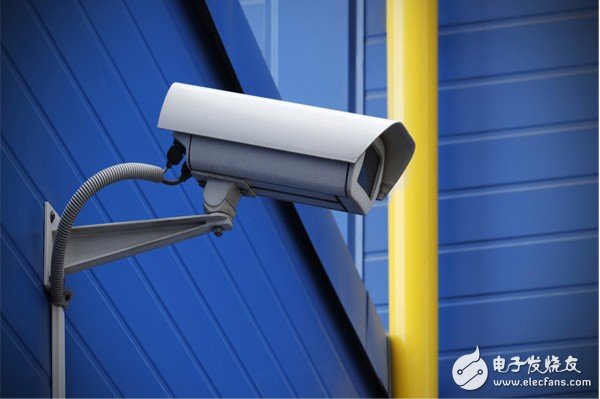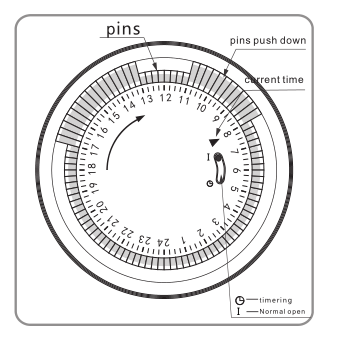With the development of society, the expansion of cities, the construction of transportation systems, and the construction of new buildings, the application of security monitoring systems has received more and more attention. After many things happen, it is always necessary to monitor the records to explain the problems. It is also often able to deter criminals from eliminating illegal crimes. Therefore, the necessity of security monitoring system in our daily life is more and more prominent, and the reasonable and reliable installation of materials and equipment in the security monitoring system has become the primary condition for ensuring the normal function of the system. First, the wiring skills need The security monitoring system wiring should not only be satisfied with the needs of the data target, but also be reasonable, safe and solid, and rigorous when the circuit is laid. Their skills need to be as follows: 1. The additional voltage of the wire should be greater than the operating voltage of the line. The insulation of the wire should conform to the device method of the line and the environmental conditions of the laying. The cross-sectional area of ​​the wire should be satisfactory for the power supply and mechanical strength. 2. When wiring, try to prevent the wire from having a joint. Unless it is not possible to use a joint, it is necessary to use crimping or welding for the joint. The joints and branches of the wire should not be subjected to mechanical force. The wires that are worn inside the pipe must not have a joint under any conditions. If necessary, connect the connector to the terminal block in the junction box. 3. The device that is wired in the building should be level or straight. The wiring should be sleeved for maintenance (PVC pipe or galvanized steel pipe, which can be selected according to the skill of the indoor pipe). The metal wire hose can be used for the ceiling wiring. 4. The signal line cannot be parallel to the high-power power line, and it cannot be worn in the same tube. If the environment is limited, parallel lines should be taken. The distance between the two lines should be more than 50cm. 5. The communication power supply of the alarm control box should be routed separately. It should not be placed in the same tube as the signal line and low-voltage DC power line. The device that communicates the power line should conform to the electrical device specifications. 6. The alarm control box to the ceiling should be buried in the wall or galvanized steel pipe to maintain the anti-damage function of the system. Second, the skill needs of piping 1. There are two types of line pipe wiring: bright and vertical: the pipe needs to be horizontal and vertical, and the pipe is required to be straight and straight; the pipe needs to be short, dredging and less elbow. 2. According to the design drawing, select the pipe type and standard. If there is no specific need, it can be selected according to the total area of ​​the wire worn in the line pipe (with the outer skin) and not exceeding the limit of 70% of the cross-sectional area of ​​the pipe. 3, in order to facilitate pipe threading and repair, when the length of the pipeline exceeds the following values, the center should be equipped with a junction box or cable box, the orientation should be easy to thread: a, the length of the pipe exceeds 40 meters, no twists and turns; b. Each time exceeds 25 meters in length, there is a bend; c. Each length exceeds 15 meters, there are two bends; d. Each time exceeds 10 meters in length, there are three bends. 4. Fixation of the line pipe: The line pipe should be fixed at the turn or at intervals of 1.5 meters. 5. The zigzag radius of the cable conduit should conform to the rule of the radius of the cable that is threaded into the cable (the nature and variety of the cable need to be different). 6. The wire tube used has no blisters, cracks and large deformation, and the inner wall of the pipe is lubricated without burrs to prevent cable damage. 7. The connection of the line pipe is selected by crimping or topping the pipe joint. 8. Vertically lay the wire tube. According to the size of the cross section of the wire, add a fixed threaded junction box (pull box) every 10 meters, and fix the wire in the box with the insulated wire clamp. The thicker the wire, the shorter the spacing between the fixed points. 24 hours mechanical timer
setting at any time
Instructions:
Specifications:
Caution:
6.T his item is only for indoor use.
Plug-in Mechanical Timer, Mechanical Timer Socket, 24hr Mechanical Timer, Mechanical Timer Plug, Mechanical Timer Adaptor, Mechanical Electric Timer Switch NINGBO COWELL ELECTRONICS & TECHNOLOGY CO., LTD , https://www.cowellsockets.com
Instant indicator
Min.setting time:15 minutes. Max.setting timer:24 hours
With hand switch,can be switched to operating and

1. Set program: 1 pin is equivalent to 15 minutes. Determine desired start time and push down pins until desired
off time.
For instance, if you want electrical devices to work from 8:00am to 11:00am and from 13:00pm to 17:00pm, you
just need to put down allthe pins between the three period time.
2. Set the current time: Turning the dial clockwise until the arrow pointing to
current time.
For example,if now it is 8:00 am, please turn the dial and make sure the
arrow point to 8. (See the picture.)
3. Plug the electrical device directly into the timer. Make sure the electrical
device is power-on.
4. Plug the timer into electrical outlet and the electrical device will be work
according to the setting program.
Note: = Normal Ope n = Timing
Make sure the switch on the Timing position. If it
is on the [Normal Open" mode, the electrical device is
always power-on and the timer function no work.
Rated Voltage, Current and Power
As shown on the label
Time Setting Range
15minutes24hours
Working Temperature
-10℃?+55℃
Operation
Clockwise
Insulation Resistance
>100M
Inherent Loss
≤1W
Application:
1. To enable high-power electric appliances to run automatically at off-peak time if there is different electricity
price according to different periods of time in some areas.
2. To use for electric appliances which need time control, such as water heaters, air conditioners, drinking
fountains, rice cookers, advertising lights and so on.
3. To control the charging time. For example, battery of electric bikes or mobile phones, storage batteries, etc.
4. Occasions which need switch on/off frequently, like interval spray irrigation for flowersand lawn, cyclical
adding oxygen to fish jar, fountains and so on.
5. Home safety precautions and lighting.
1.D o not exceed the maximum ratings of the timer.
2.M ust reset the current time after power failure.
3.D o not plug the timer directly into the working electrical appliances.
4.U nless changing the setting, keep the program same every day.
5.D o not disassemble timer by yourself. Professionals service are needed for maintenance.